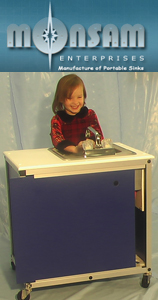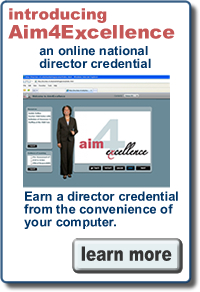Fight for the things that you care about, but do it in a way that will lead others to join you.
-Ruth Bader Ginsburg (1933-2020), Supreme Court Justice
In "Put Away the Science Activity Books and Tune in to Your Science Senses!" in the November/December 2009 issue of Exchange, Polly Neill outlines six components of the Preschool Scientific Method. Here is a shorthand version:
Observing. Observing is how children assemble information to answer a question, to learn more about something, or to solve a problem. Children begin to look closely at something, that is, with intention. As observers, children put us to shame, for they observe with all of their senses as well as their whole bodies.
Classification. Classification is the process of grouping similar things together. This involves both identifying the relationships between things and the categories they do — and do not — belong to. Young children decide on their own system of classification and will sort and order the information they gather according to categories that are meaningful to them.
Experimenting. Experimenting is testing an idea to see if it is true or trying a solution to see if works. Throughout the daily routine children encounter problems with materials in their play: “How can I get this blanket to stay over our house?” “The glue won’t come out!” “This puzzle won’t go together!” Often these are problems the children do not have answers for, so they might try several ways to find an answer.
Predicting. To predict is to describe what you expect will happen. Even for children, predicting is more complex than simply guessing, because predictions are based on their knowledge and observations. To predict, children must be able to picture what happened in comparable situations previously, as well as imagine what might happen in the future as a result of their actions.
Drawing conclusions. Concrete evidence confirming a prediction leads to one type of conclusion; contradictory evidence means children have to change their ideas, and possibly gather additional information before reaching a different conclusion. Like adults, children make generalizations and form theories about how the world works based on these experiences.
Communicating ideas. Communicating ideas means sharing one’s questions, observations, predictions, and conclusions with others. Children are excited about sharing their discoveries and do so in many ways — through spoken language, drawings, written words and symbols, demonstrations, or gestures.
 Exchange has packaged seven of its most popular curriculum resources into a single “Curriculum Tool Kit” and is offering the entire set at a 33% discount — separately these resources would cost $166, but we are offering the entire Curriculum Tool Kit for only $112. Resources in the kit include:
Exchange has packaged seven of its most popular curriculum resources into a single “Curriculum Tool Kit” and is offering the entire set at a 33% discount — separately these resources would cost $166, but we are offering the entire Curriculum Tool Kit for only $112. Resources in the kit include:
- Beginnings Workshops Book #4 - Curriculum: Brain Research, Math, Science
- Beginnings Workshops Book #5 - Curriculum: Art, Music, Movement, Drama
- Hearing Everyone’s Voice: Educating Young Children for Peace and a Democratic Community
- Connecting: Friendship in the Lives of Young Children
- More Than Numbers: Mathematical Thinking in the Early Years
- Exchange Articles Collection #3 - Children with Differing Abilities
- Out of the Box Training Kit (printed version): Recognizing the Essentials of Developmentally Appropriate Curriculum
 << Previous Issue
| View Past Issues | | Next Issue >>
<< Previous Issue
| View Past Issues | | Next Issue >>  Exchange has packaged seven of its most popular curriculum resources into a single “Curriculum Tool Kit” and is offering the entire set at a 33% discount — separately these resources would cost $166, but we are offering the entire Curriculum Tool Kit for only $112. Resources in the kit include:
Exchange has packaged seven of its most popular curriculum resources into a single “Curriculum Tool Kit” and is offering the entire set at a 33% discount — separately these resources would cost $166, but we are offering the entire Curriculum Tool Kit for only $112. Resources in the kit include:

Comments (1)
Displaying 1 CommentWashington Child Development Council
Washington, DC, United States
From my experiences directing a child development center, conducting workshops, and supervising ECE professional development efforts, I recommend that the ECE teachers and administrators learn the skills outlined in this EED. Many ECE educators think that children learn from a basic "we tell, they learn." This is only partially true as children learn in myriad ways. They learn most successfully when they discover the answers for themselves, testing what they experience and sharing the informaton with others.
The Captcha letters are covered by the verification box.
Post a Comment